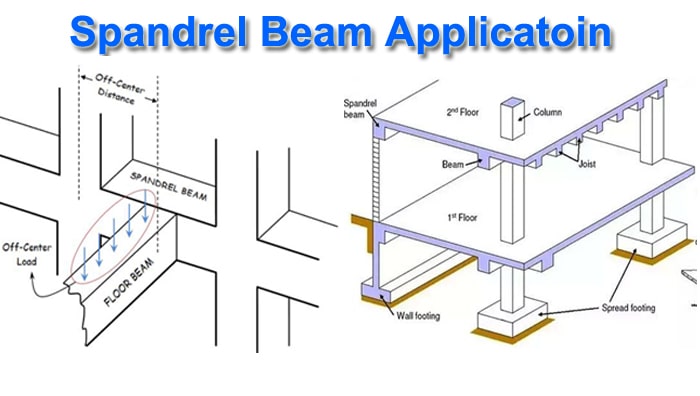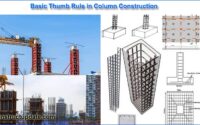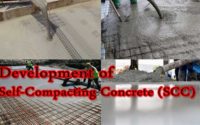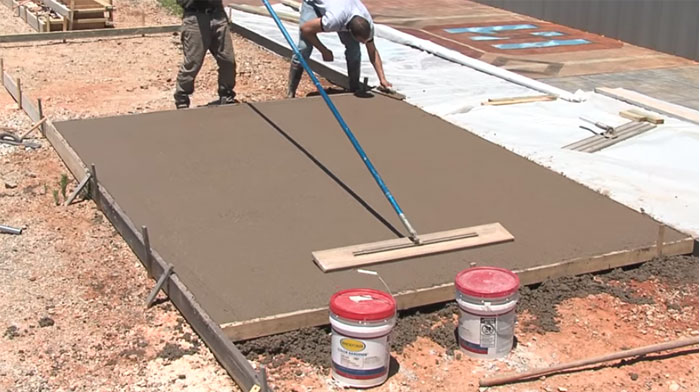Spandrel Beam Application | Spandrel Beams Advantages, Disadvantages
What is Spandrel Beam?
Spandrel beams are load-bearing beams that attach to only the support columns along the circumference of a structure in both concrete and steel construction.
Masonry walls are often unable to support their own weight, as well as the weight of the slab, in the context of tall buildings.
As a result, the beam has additional walls at each floor level to sustain the load on the wall, as well as possibly some load on the roof.
Spandrel beams are beams that run the length of each floor’s external wall. It’s a horizontal steel or concrete frame placed along the outside of a structure to support the weight of walls or certain roof loads.
Edge beams are another name for spandrel beams. These are used when the wall being constructed cannot support the weight of the slab or the floor.
Spandrel Beam Characteristics:
The arrangement could be under the spandrel beam or not. Under a spandrel beam, there could be a column or a window.
A spandrel beam runs the length of the house’s external wall.
Between the window sill and the head of the window, spandrel beams can be installed.
In steel or R.C.C systems, spandrel beams can be stretched horizontally from one column to another. These devices will also help to sustain the wall.
Over the roofs of roof frameworks, parapets are erected.
In comparison to rectangular floor beams, flanged floor beams such as T-Beams and L-Beams are more resistant to torsional loads.
As a result, spandrel beams or edge beams are erected as flanged floor beams, which maximize the high-rise structure’s overall load capability.
The load from the slab is torsionally transferred to the columns via the beams in the spandrel beam design. To avoid torsional collapse, the beam requires further reinforcement.
Through commentary in the Building Code Requirements for Reinforced Concrete, ACI Committee 318 lays out the criteria and guidelines for the building of spandrel beams (ACI 318-19).

Spandrel Beam Applications:
Spandrel beams are utilised at each floor level in multi-story constructions. These are used to support the floor beams by being fastened to the outer perimeter of the floor slabs as a belt. The connection between the slab and the outside columns is also strengthened. The parapets on the roofs are set over these beams.
Spandrel Beam’s Benefits:
Spandrel beams add extra strength to a multi-story building’s outside walls.
Steel and concrete buildings using these beams have more lateral rigidity. The use of spandrel beams with both longitudinal and transverse reinforcements is preferable in large beam-column connections. The building’s seismic performance is improved as a result of this.
In coupled shear walls, spandrel beams are utilised to provide enough stiffness and ductility to withstand earthquakes. Shear walls and lintel, as well as exterior side apertures such as windows, are supported by these.
Spandrel Beam Disadvantages:
Because spandrel beams are positioned on the outside of a building, they are more likely to be exposed to moisture than floor beams, resulting in rot.
Reinforcement steels deterioration or corrosion
Concrete spalling and cracking.
As a result, a significant sum of money is spent on the restoration.





